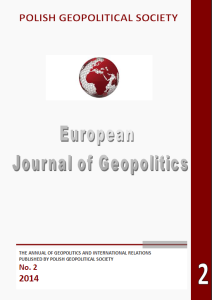Geomancy and social upheveals in Korea
Geomancy and social upheveals in Korea
Author(s): Hong-key YoonSubject(s): Political Theory, Geopolitics
Published by: Polskie Towarzystwo Geopolityczne
Keywords: geomancy; Korea; Korean culture; Korean uprisings
Summary/Abstract: Geomancy has for some time played an important role in social change and upheavals in Korean history. It has always been a fermenting agent of social instigation. Social instigators and leaders of resistance to the established socio-political class often attempted to manipulate the people’s beliefs in geomancy. Some major socio- political events in contemporary history of Korea, including several presidential elections, were said to be associated with geomancy in one way or another, even in a small way such as moving a presidential candidate’s family graves in expectation of good luck to a more auspicious place. In this paper I attempt to document and explain the three major social upheavals in Korean history that had significant relationships with geomantic prophecies or adopted some aspect of the geomantic belief system. The three major social upheaval- rebellions that are associated with geomantic belief in Korea are (1) the Myochong rebellion (1135-1136) and attempt to move the Koryo Dynasty’s capital to present day Pyongyang; (2) Hong Kyongnae’s rebellion (1811-1812) in the Northwestern District of the Korean Peninusla during the later part of the Chosŏn dynasty; and (3) Chon Pongjun and Tonghak Peasant War (1894). After discussing briefly the general nature of geomancy and its impact on Korean landscape and life style, I will discuss in a chronological order these three social upheavals in association with geomancy.
Journal: European Journal of Geopolitics
- Issue Year: 2014
- Issue No: 2
- Page Range: 5-23
- Page Count: 19
- Language: English

